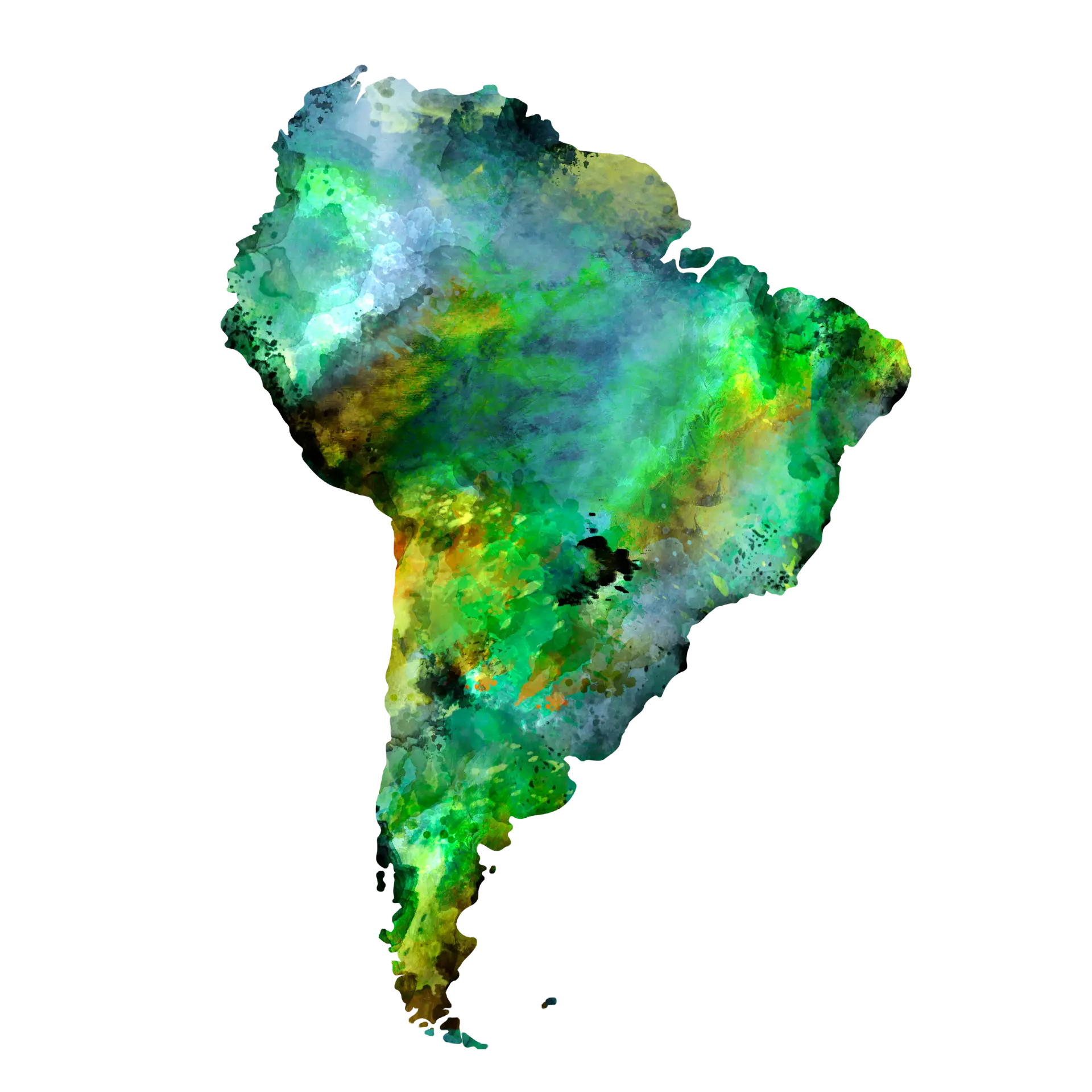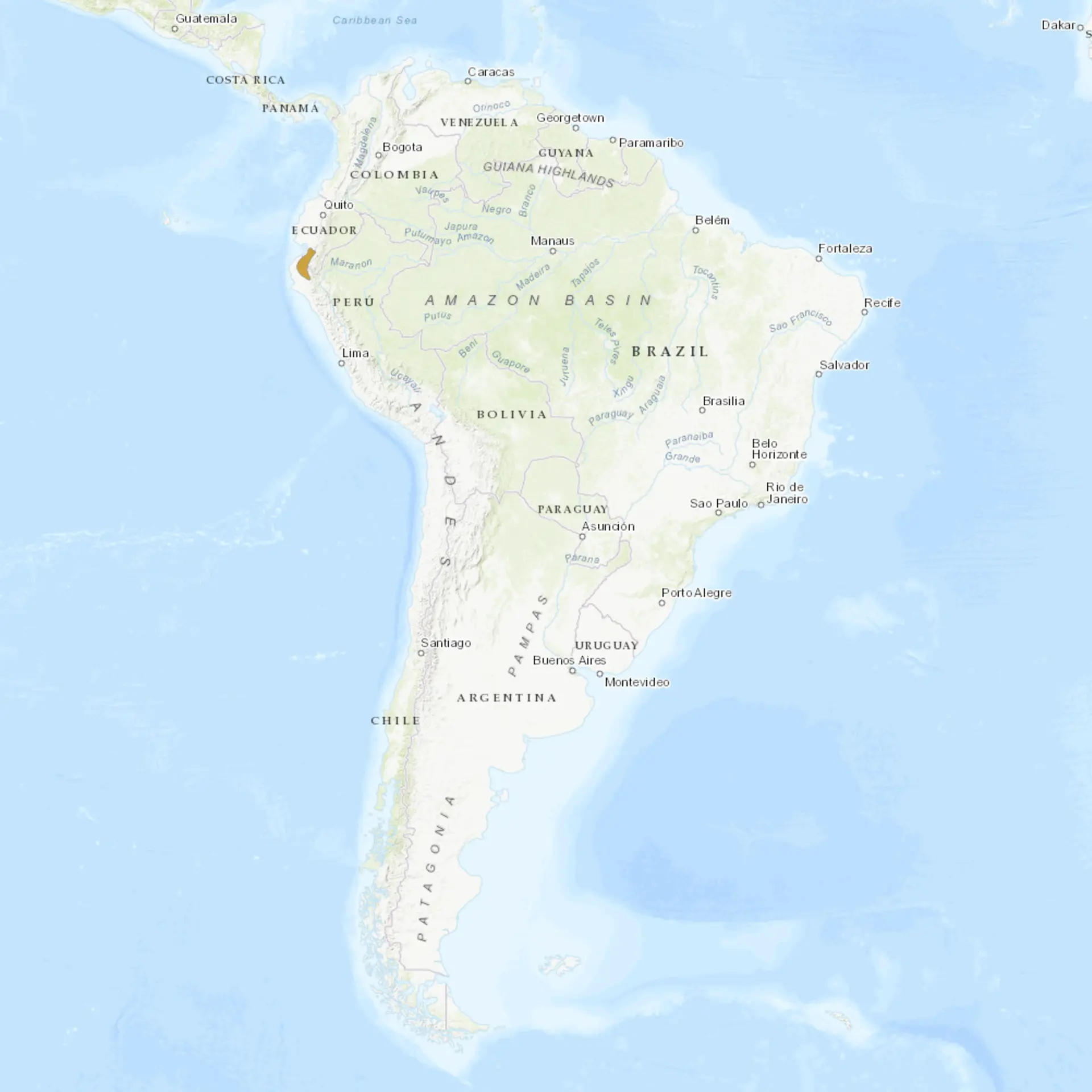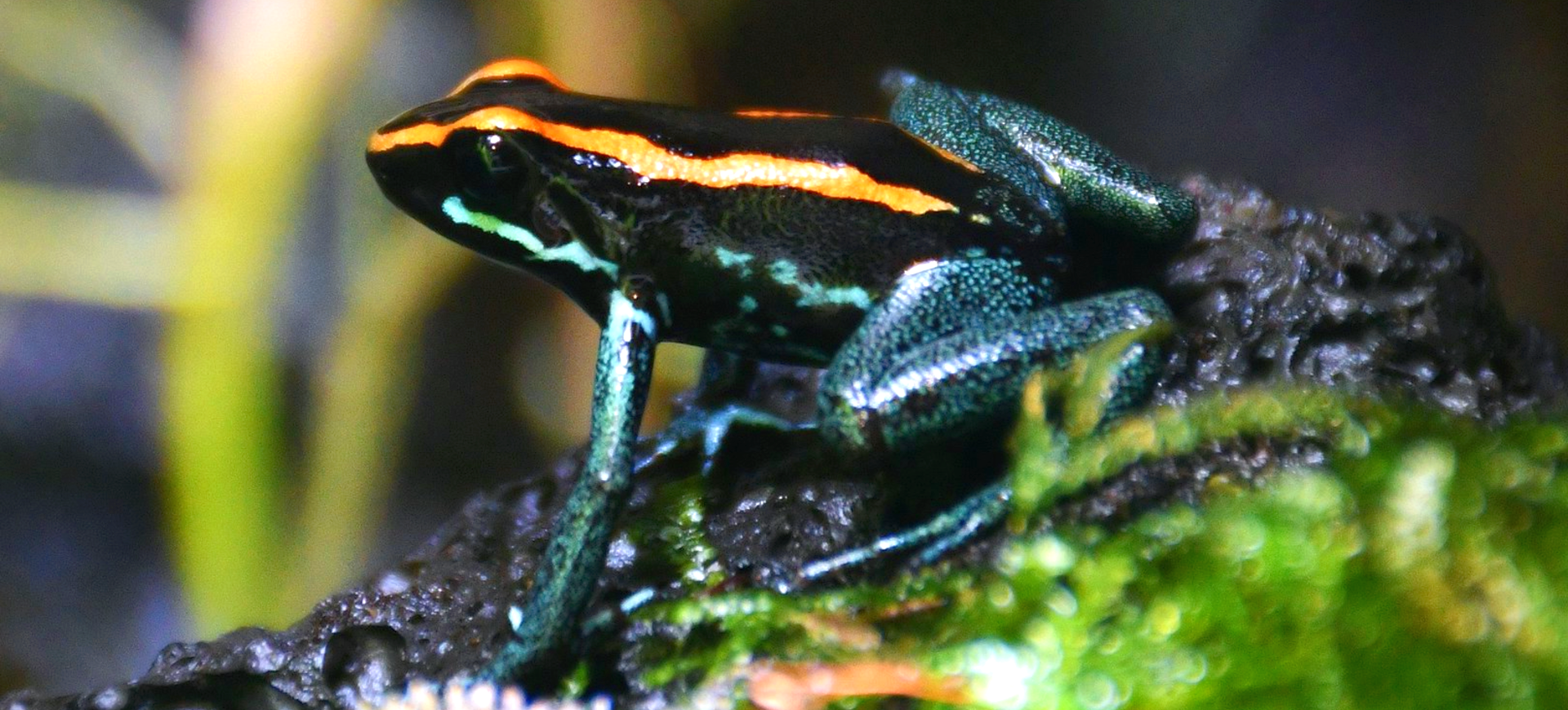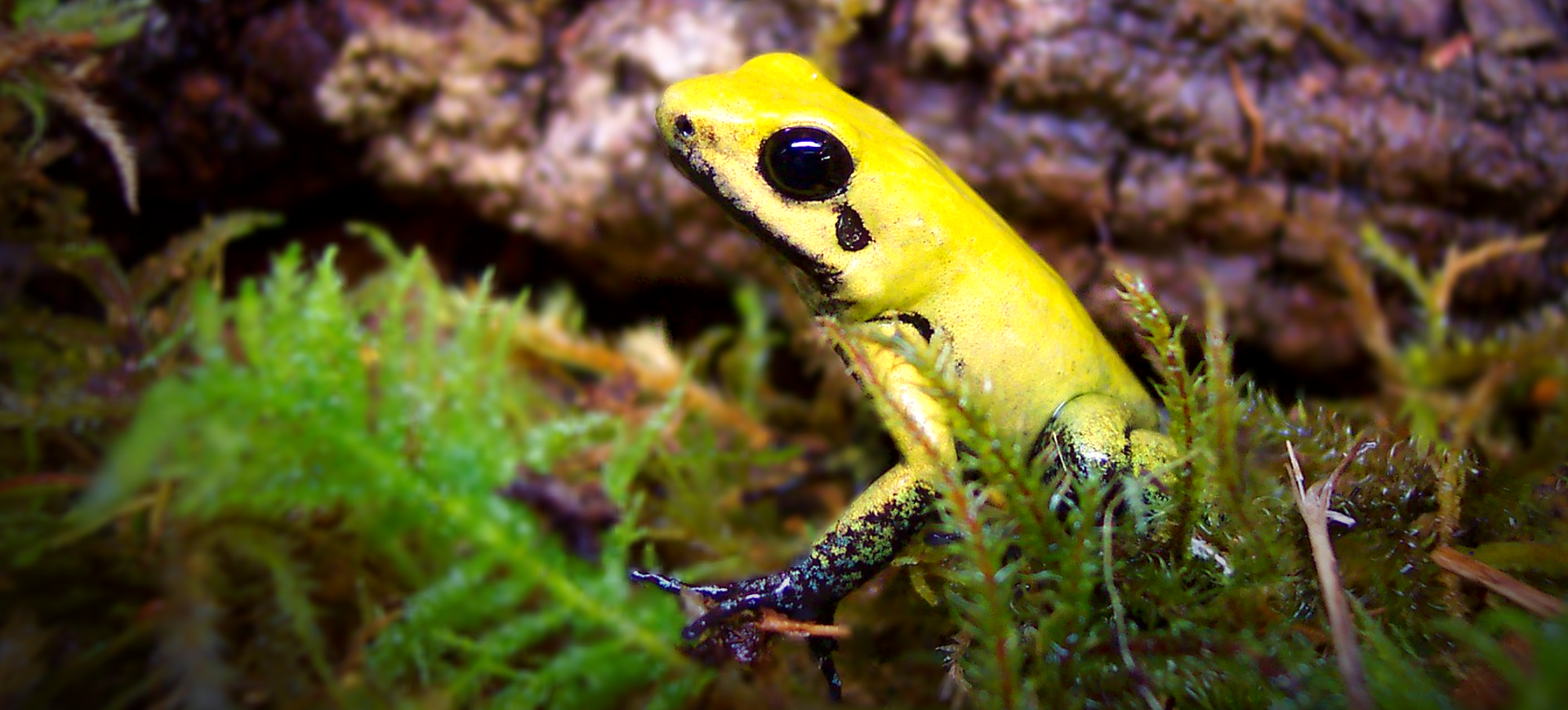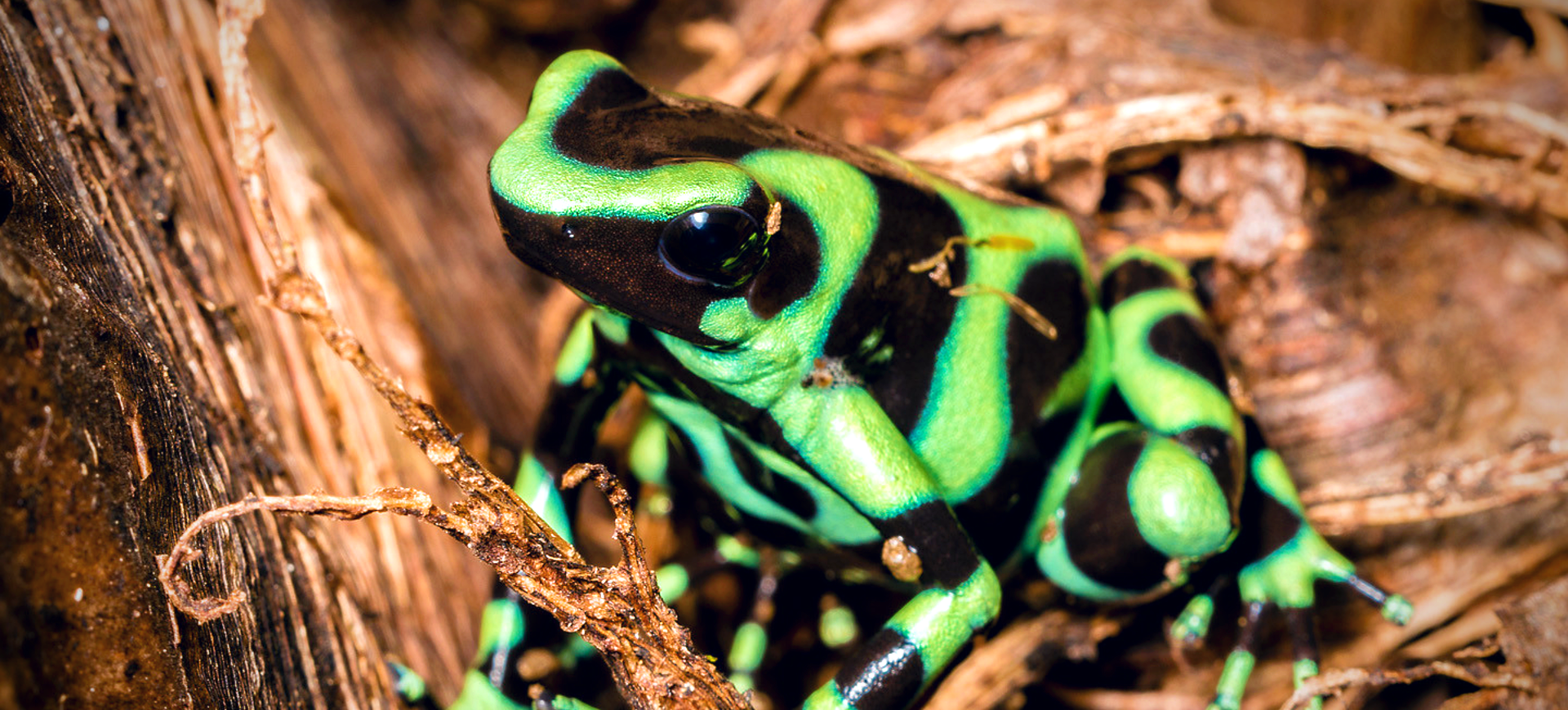Overview
Anthony’s Poison-arrow Frog (Epipedobates Anthony), also known as the Phantasmal Poison Frog, is a small, brightly colored amphibian native to Ecuador and Peru. This species is renowned for its vibrant coloration, typically combining bright red with black or dark green stripes or spots. It belongs to the family Dendrobatidae, commonly known as poison dart frogs, noted for the potent toxins found in their skin.
Despite its small size, typically about 1 inch in length, Anthony’s poison arrow frog has a significant presence in its habitat. The species is predominantly terrestrial, spending most of its time on the forest floor amongst leaf litter. The toxic secretions of its skin serve as a defense mechanism against predators, warning them through the frog’s vivid coloration. These toxins are derived from their natural diet, primarily consisting of ants and mites.
Reproductive behaviors in Anthony’s Poison-arrow Frog are particularly notable. Males are vocal and attract females with their calls. After mating, females lay eggs in moist leaf litter, which are then guarded by the male. Once the eggs hatch, the male transports the tadpoles on his back to water sources, where they complete their development. This level of parental care is a distinguishing feature of many poison dart frog species.
Taxonomy
Kingdom
Phylum
Class
Order
Family
Genus
Species
Type
Current distribution:
Anthony's Poison-arrow Frog has a relatively restricted range, primarily in southwestern Ecuador and northern Peru. Within this range, populations are patchily distributed, depending on the availability of suitable rainforest habitats. These frogs are commonly observed in protected areas and national parks, where conservation efforts help preserve their natural environment. However, their populations outside protected zones are declining due to human activities such as logging and agriculture.
Due to habitat fragmentation, local populations are often isolated from one another, limiting genetic diversity and increasing the risk of extinction. This species is collected for the pet trade in some areas, though international regulations have mitigated this threat. Despite their adaptability to some modified habitats, they depend highly on stable rainforest ecosystems. Conservation organizations are working to monitor their population trends and establish corridors to connect fragmented habitats.
Physical Description:
Anthony’s Poison-arrow Frog is small yet visually striking. The most distinctive aspect of its appearance is its bright red or orange color, contrasted with darker stripes or spots. This aposematic (warning) coloration signals its toxicity to potential predators. The skin of this frog is smooth and glossy, accentuating its bold color pattern.
Females are generally larger than males, a common trait in many amphibians. Despite their small size, these frogs are agile and active, capable of quick movements. They possess well-developed legs for jumping and climbing, although they are primarily ground-dwellers. Their small size and vivid coloration are key adaptations for survival in the dense forest understory.

Lifespan: Wild: ~4 Years || Captivity: ~10 Years

Weight: Male: 0.07–0.1 oz (2–3 g) || Female: 0.1–0.14 oz (3–4 g)

Length: Male & Female: 0.8-1.2 in (2-3 cm)

Top Speed: 5 mph (8 km/h)
Characteristic:
Native Habitat:
Anthony’s Poison-arrow Frog is native to Ecuador and Peru’s tropical lowland and foothill rainforests. These frogs are typically found near streams and other water sources, essential for reproduction and moist skin maintenance. They prefer leaf litter and low vegetation on the forest floor, where they can hide from predators and hunt for prey. The dense, humid environment of the rainforest, with constant temperatures and high humidity, provides the perfect conditions for their survival.
This species also inhabits secondary forests and disturbed areas, showcasing its adaptability to some habitat modifications. However, it is not typically found in open areas or regions with low moisture levels. The frogs rely heavily on canopy cover, which protects them from direct sunlight and maintains a stable microclimate. Their habitat preferences make them vulnerable to deforestation and habitat fragmentation, both major threats in their native range.
Climate Zones:
Biomes:
WWF Biomes:
Biogeographical Realms:
Continents:
Diet:
Diet & Feeding Habits:
Anthony’s Poison-arrow Frog is an insectivore that feeds primarily on small arthropods such as ants, mites, and termites. These prey items are critical to the frog’s toxicity, as the alkaloids in the insects are metabolized to produce the frog’s skin toxins. In captivity, where their diet is more controlled, these frogs lose their toxicity due to the absence of alkaloid-rich prey. They forage actively during the day, using their sticky tongues to capture small, fast-moving insects.
Young frogs (froglets) begin feeding on tiny invertebrates shortly after metamorphosis. As they grow, their diet expands to include a wider range of small arthropods. Males often hunt within their territory, ensuring a constant food supply while protecting their domain from rivals. Females tend to forage in broader areas but return frequently to lay eggs in safe, moist locations.
Mating Behavior:
Mating Description:
The mating behavior of Anthony’s Poison-arrow Frog is characterized by the male’s vocalizations to attract females. Males call from perches on the forest floor, each male having a distinct call. When a female approaches, the male leads her to a suitable site for egg laying, such as moist leaf litter or an aperture.
Females lay a small number of eggs, after which the male is responsible for guarding the eggs. He keeps them moist and protected from predators. After the eggs hatch into tadpoles, the male carries them to a water source, such as a small pool or a leaf axil filled with water. The tadpoles complete their development in these water sources, feeding on algae and detritus.
Reproduction Season:
Birth Type:
Pregnancy Duration:
Female Name:
Male Name:
Baby Name:
Social Structure Description:
Anthony’s Poison-arrow Frogs are solitary and territorial. Individuals actively defend their small territories from conspecifics. Males are especially territorial during the breeding season, using vocalizations and physical displays to ward off rivals. Territories typically consist of a few square meters and include key resources such as moist hiding spots and foraging areas. Females are less aggressive but will avoid overlapping territories with other females to reduce competition.
Interactions between individuals are usually limited to courtship and mating activities. Tadpoles do not exhibit social behavior; they are dispersed in water sources and develop independently. Adults communicate through calls unique to their species and used for both mate attraction and territorial defense. While generally solitary, these frogs are highly dependent on the ecological health of their shared habitat for survival.
Groups:
Conservation Status:
Population Trend:
The population of Anthony’s Poison-arrow Frog in the wild is under threat primarily due to habitat loss. Deforestation for agriculture, logging, and human settlement has reduced and fragmented their natural habitat. Despite being present in several protected areas, the continued habitat loss outside these areas is a concern.
Conservation efforts are crucial to protect their remaining habitats and to reverse the population decline. Research and monitoring are ongoing to better understand their population dynamics and habitat requirements. Captive breeding programs have been successful, providing an additional safeguard against extinction.
Population Threats:
Habitat destruction is the major threat facing Anthony’s Poison-arrow Frog. The conversion of forests to agricultural land, logging, and the expansion of human settlements are reducing their natural habitat. Additionally, pollution and land use changes are impacting their habitat quality.
The pet trade also poses a threat, though it is less significant than habitat loss. Climate change is another potential threat, as it could alter the environmental conditions critical for their survival. Disease outbreaks, particularly those affecting amphibians, are also a concern.
Conservation Efforts:
Conservation strategies for Anthony’s Poison-arrow Frog include habitat protection and management. Efforts are focused on conserving and restoring their natural habitats, particularly in protected areas. Regulation of the pet trade is also important to ensure that wild populations are not depleted.
Captive breeding programs have been effective in maintaining populations of this species and have the potential to support reintroduction efforts if necessary. Educational campaigns and community involvement are crucial to raise awareness about the importance of conserving this species and its habitat. International cooperation is key, as the species is found in multiple countries.
Additional Resources:
Fun Facts
- Anthony’s Poison-arrow Frog is named after herpetologist Anthony, who contributed significantly to the study of amphibians.
- The species is known for its hardiness and adaptability, making it a popular choice in the pet trade.
- Their bright coloration is a classic example of aposematic coloration, serving as a warning to potential predators.
- These frogs can jump several times their body length, an adaptation to quickly escape predators.
- In the wild, the toxicity of Anthony’s Poison-arrow Frog is derived from their diet, particularly from consuming toxic ants.
- Their calls are an important aspect of their behavior for attracting mates and establishing territories.
- Anthony’s Poison-arrow Frog is a smaller species in the Dendrobatidae family.
- The species plays a role in controlling insect populations in their ecosystems.
- In captivity, they lose their toxic properties due to changes in diet.
- Despite their toxicity, these frogs face few natural predators in the wild.

